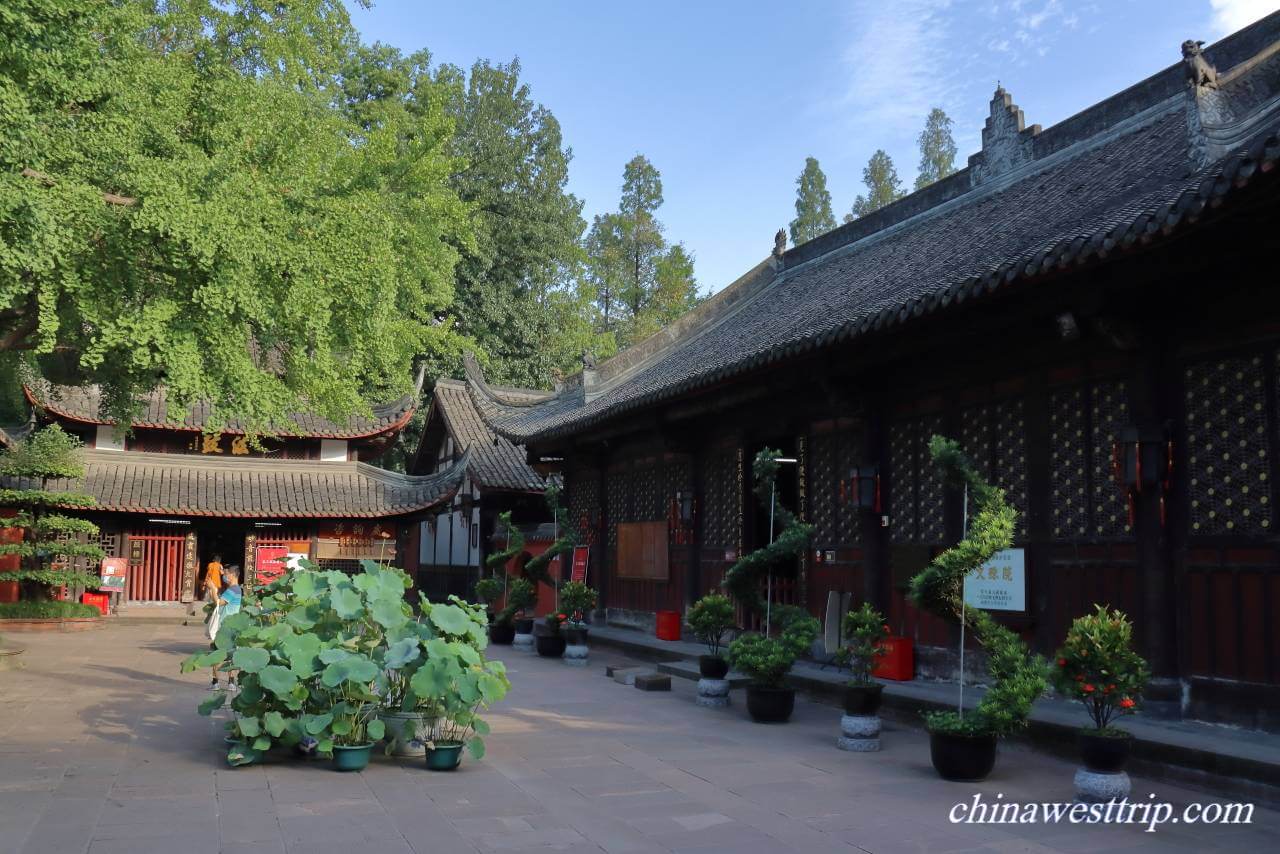
Wenshu Monastery
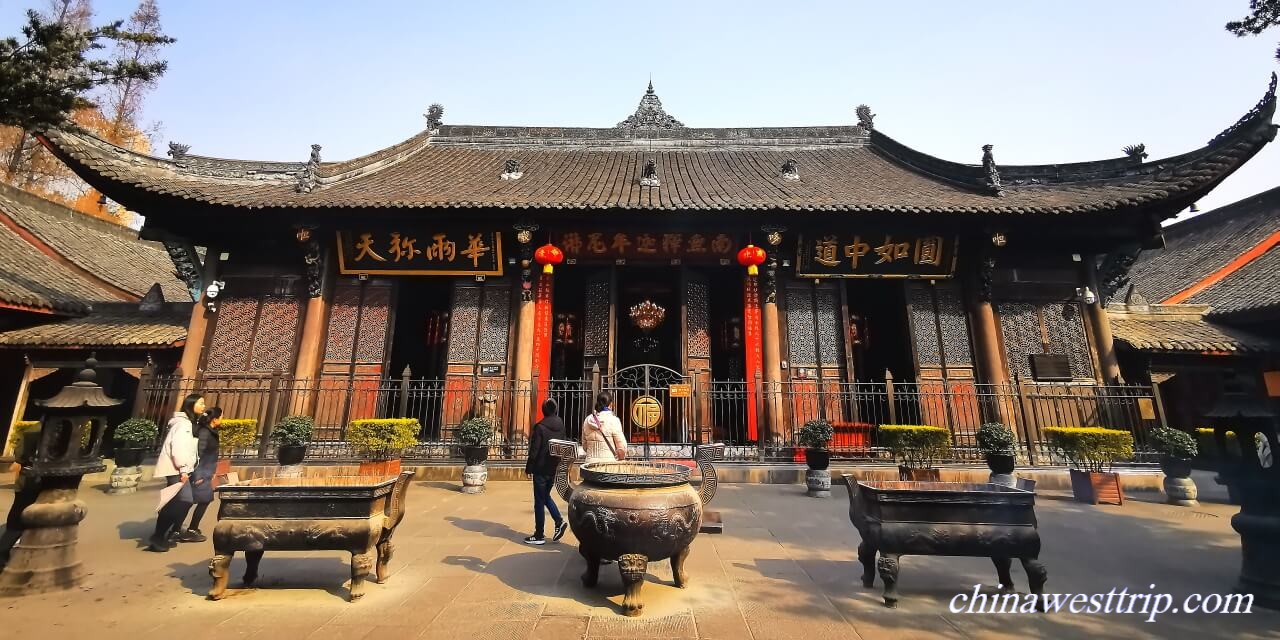
Name in Chinese: 文殊院 Wén Shū Yuàn [wen su: ‘ju:æ]
Duration of Tour: One and a Half Hours
Location: No.66, Wenshuyuan Street, Qingyang District, Chengdu, Sichuan Province
Highlights: Buddhist Culture and Traditional Chinese Architecture
Must-see Sightseeing Spots: the Heavenly King’s Hall, the Three Mahasattvas Hall, the Mahavira Hall, the Lecture Hall, the Library Building, the Tower of Peace and the Garden
Reputations: No.1 Buddhist Monastery in the Whole Yangtze River Valley, One of the Most Famous Buddhist Monasteries in China, A Provincial Key Historical and Cultural Relic Site under Protection
Wenshu Monastery could be traced back to Daye Period(605---618), the reign of Emperor Yang, the Sui Dynasty(581---619). The monastery was originally named as Xinxiang Monastery. By the end of the Ming Dynasty(1368---1644), it was destroyed due to the war between the rebels and the government. The monastery was rebuilt in 1679 by Master Cidu during the reign of Emperor Kangxi. Wenshu refers to Manjusri Bodhisattva. The emperor named it as Kong Lin Monastery.
Wenshu Monastery is one of the top five famous historical sites in Chengdu. It is located in the northern suburb of Chengdu, covering an area of 20 hectares(49 acres). The monastery consists of five main buildings, namely the Heavenly King’s Hall, the Three Mahasattvas Hall, the Mahavira Hall, the Lecture Hall, the Library Building.
The Heavenly King’s Hall
According to the traditional Chinese architectural practice, the Heavenly Kings Hall is generally placed behind the entrance gate as the front building of Buddhist monasteries. It contains five huge statues. The statues are usually made of wood or earth. They are called the Four Heavenly Kings. The heavenly kings serve as protectors of lands in four directions. Their statues flank a south-north axis. The image of Maitreya Buddha sits in the middle. He is also known as the Laughing Buddha among Chinese people. He has a big belly, always sitting with leg crossed. The big belly conveys that he has good patience. Behind the statue of Maitreya Buddha, the image of Amitabha Buddha is placed. Amitabha Buddha masters the Western Pure Land.
The Bell Tower and the Drum Tower
The Bell Tower and the Drum Tower are placed in the yard between the Heavenly King’s Hall and The Three Mahasattvas Hall. Ksitigarbha Bodhisattva is placed in the Bell Tower for worship. He is regarded as the Bodhisattva rescuing those who are suffering in the hell. In fact, he has achieved the complete enlightenment, and would have been granted as a Buddha. But he once vowed that he would never accept the title of Buddha before all the creatures suffering in the hell were rescued and redeemed. He is also considered as the symbol of filial duty. In the Drum Tower, the image of Bhaisajyaguru Buddha is placed. Bhaisajyaguru Buddha is also known as the Medicine Buddha. He masters the Eastern Glazed World.
The Three Mahasattvas Hall
Mahasattva is a Sanskrit word which means great Bodhisattva in English. A Mahasattva refers to a Bodhisattva who attains a high degree on the path of consciousness awakening. The Three Mahasattvas are Manjusri, Avalokitesvara and Samantabhadra. Wenshu Monastery is named after Manjusri Bodhisattva. He is regarded as the symbol of the most profound wisdom. Avalokitesvara Bodhisattva is considered as the symbol of the deepest compassion. Samantabhadra means great virtue. He represents the most dedicated practice. The images of the Three Mahasattvas are worshiped in the hall. The statues of King Wenchang and Guan Yu flank the three Bodhisattvas. Wenchang is a Taoist god. He is regarded as the God of Literature. Guan Yu was a general of the Shu Han Kingdom during the Three Kingdoms Period(220---280). He became one of guardians in Buddhism.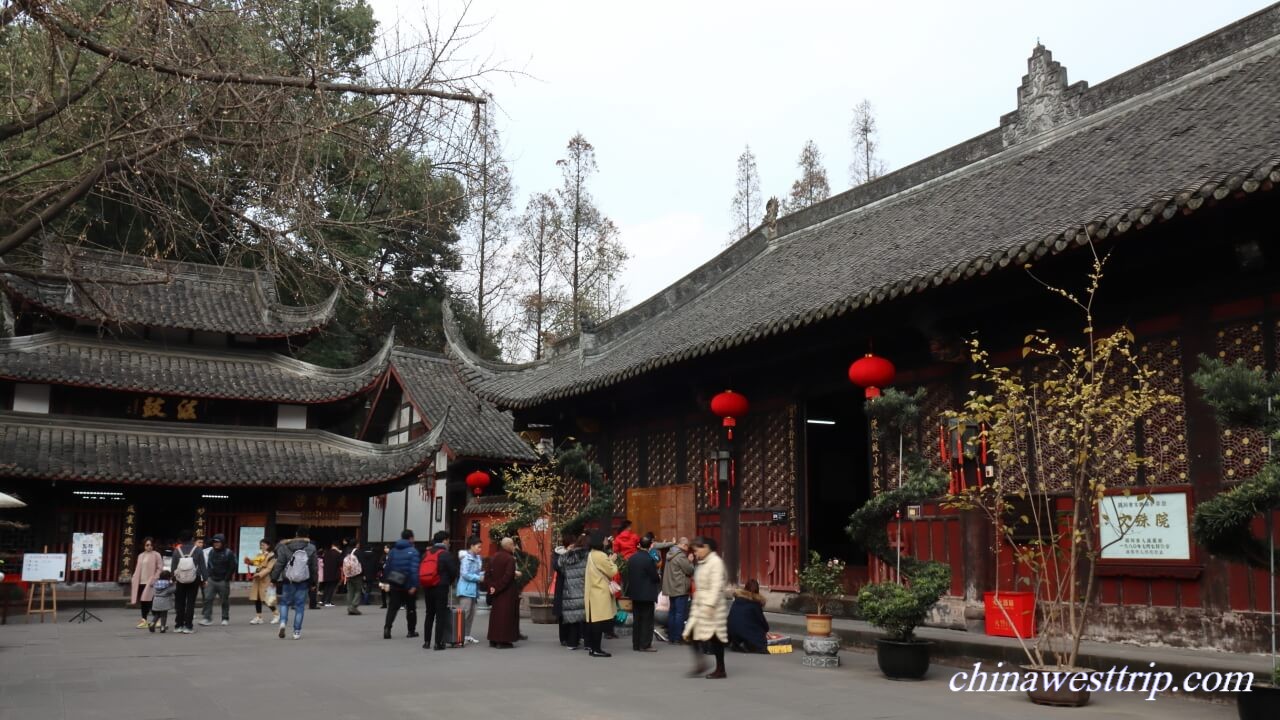
The Mahavira Hall
Veda stands behind the Three Mahasattvas. He is holding his weapon, a pestle. Veda serves as the protector of Buddhism. He is considered as the No.1 warrior in Buddhism. It is said that Veda protected the body of Siddhartha, the founder of Buddhism, when some devils stole it away after the founder passed away. Veda is always facing the Mahavira Hall.
Mahavira means great hero or great Buddha. The hall is called Great Buddha Hall in Chinese. It is commonly the primary building in every Buddhist monasteries. The hall is commonly built to commemorate Siddhartha. Sakyamuni is a title granted to Siddhartha by his disciples. Some times, the Great Buddha Hall is placed with three Buddhas or seven Buddhas for worship. In Wenshu Monastery, the hall is dedicated to Sakyamuni Buddha. There are some other statues placed in the hall. The top two disciples of Siddhartha stand closely to the main Buddha, namely Ananda and Kasyapa. They serve as the assistants of Sakyamuni Buddha. The images of top eighteen Arhats are set near the walls on both sides.
The Lecture Hall
In front of the hall, there is a copper sculpture of mythical beast. It has a dragons head and tigers claws. It is called Hou or Shanting in Chinese. It seems that the beast is listening to the Buddha’s lecture.
In the middle of the hall, there is an inscribed board. The inscription reads Kong Lin. It was granted by Emperor Kangxi. The characters are in the handwriting of the emperor. Kong means empty. Lin means monastery.
There are two niches in the Lecture Hall. The Buddha statues in the niches are made of jade. Both were taken back from Burma. In 1923, Master Xinglin went to Burma to pay a visit. He was granted with a jade Buddha statue as a gift. He took the statue back and offered to Wenshu Monastery. The other one was offered by Master Dengyun in 1938.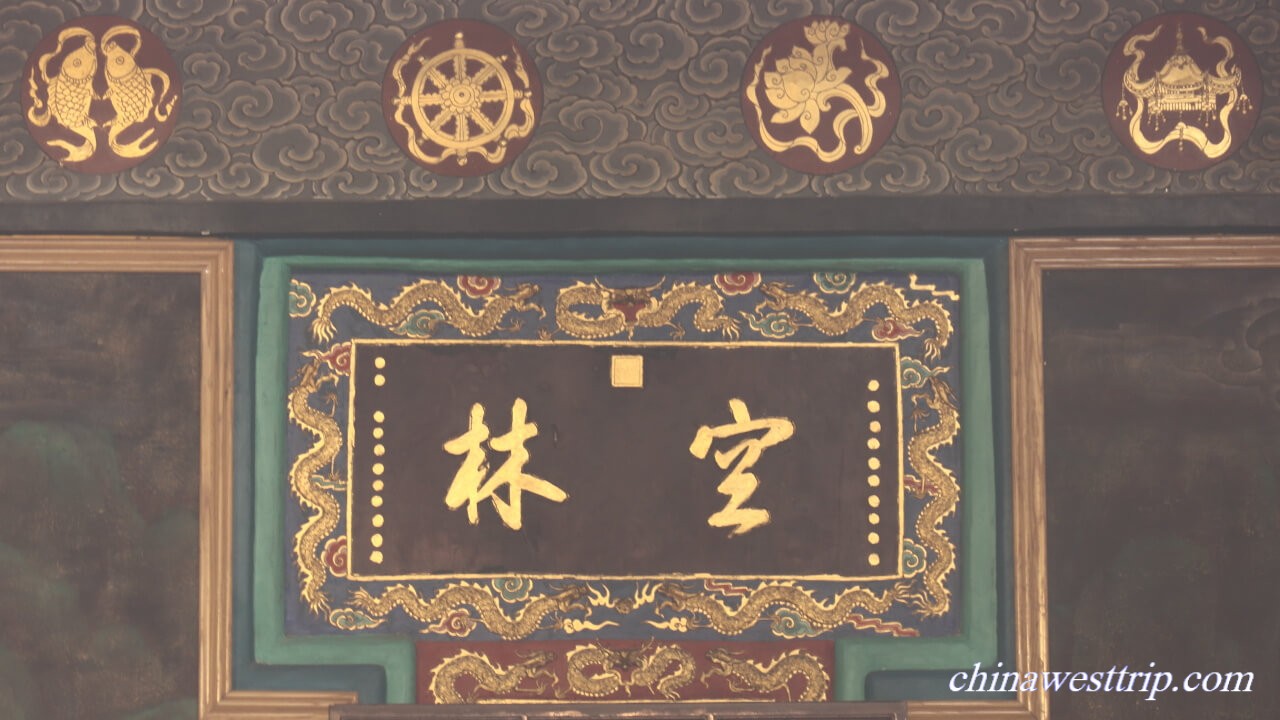
The Library Building
The Library Building contains two sarira stupas. One is the Buddha’s Sarira, and the other is the relic of Xuanzhuang Master. The master’s relic is a piece of skull. Both the sarira stupas are only allowed to be shown on the birthday of the Buddha.
The Tower of Peace
The tower was built in 1991. In 1980s, Master Kuanlin vowed to build a tower in Wenshu Monastery for the peace of the world. It is a eleven-storied iron tower cast with one thousand Buddha sculptures. The tower is 21 meters(69 feet) in height and 27,000 kg(59,525 pounds) in weight.
The Garden
There is a beautiful garden in the backyard of the monastery. It is an ideal place for people to escape from the summer heat in Chengdu.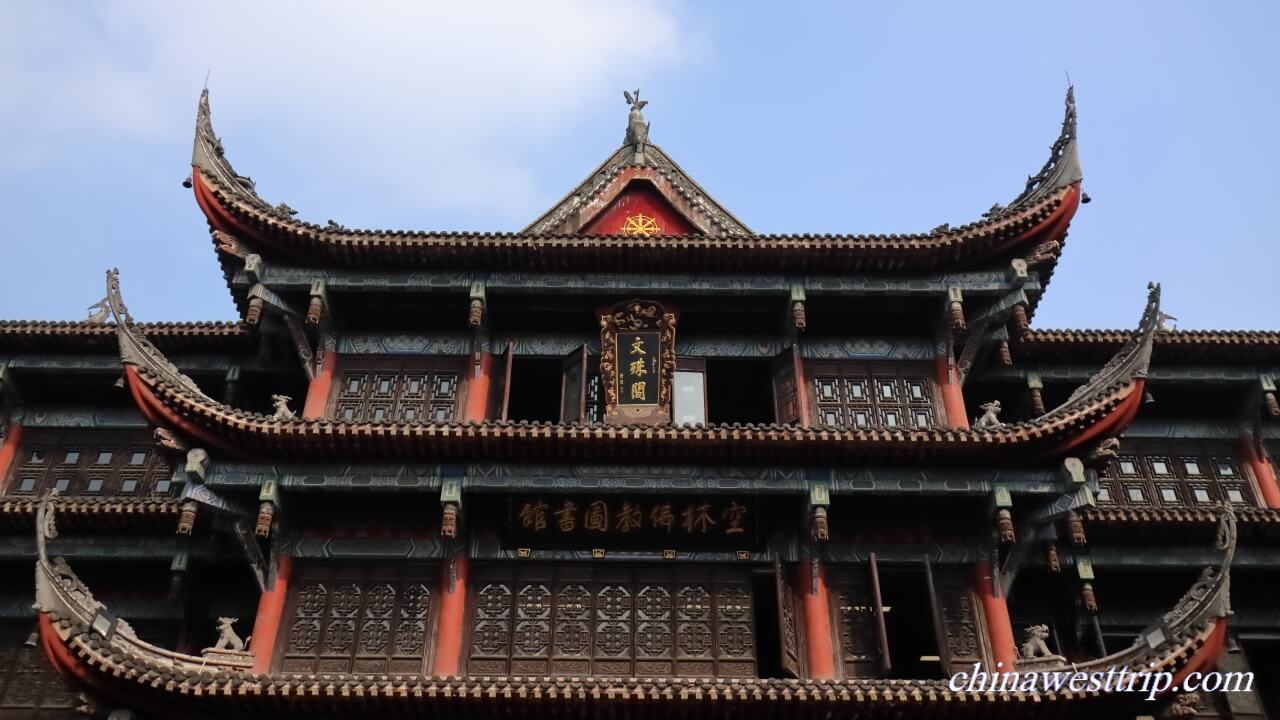
Opening Hours:
9:00a.m.---5:00p.m.
Recommended Tours:
Three-day Panda Volunteer Program with Chengdu Highlights Tour
Related Articles:
A Brief Introduction of Buddhism
Author: Tina Luo
Update:

Wenshu Monastery
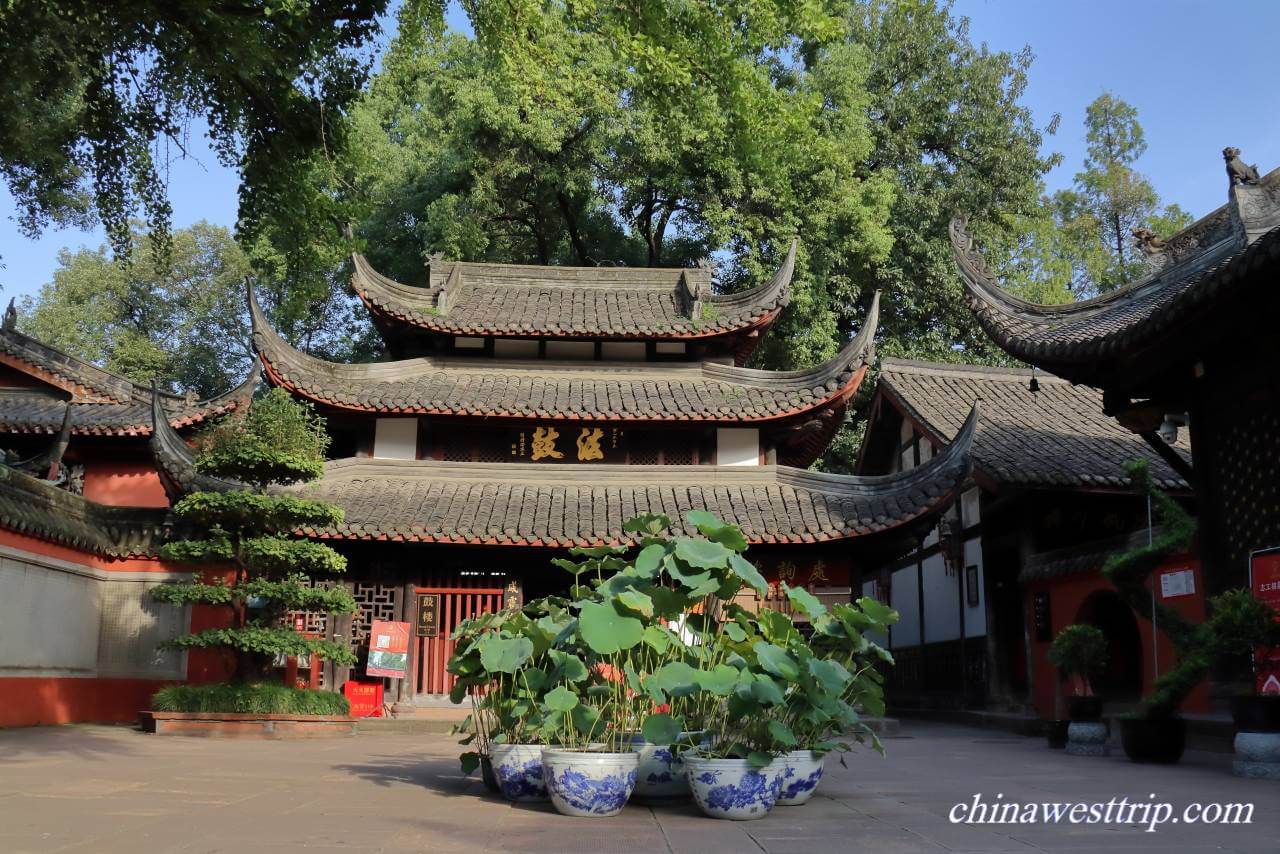
The Drum Tower of Wenshu Monastery
Wenshu Monastery
the Garden of Wenshu Monastery
Wenshu Monastery
the Tower of Peace